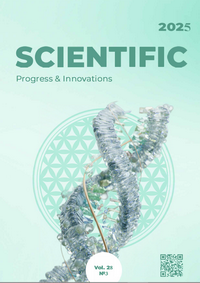Efficacy of lifetime coproovoscopy at laboratory diagnostics of the digestive tract nematodoses of chickens
DOI:
https://doi.org/10.31210/spi2025.28.03.50Keywords:
parasitology, chickens, heterakosis, capillariasis, ascariasis, coproovosocopy, flotation methods, effectivenessAbstract
Gastrointestinal nematodoses of chickens are widespread invasion diseases that cause economic losses in the poultry farming industry. The most common nematodes include the species of Ascaridia galli, Heterakis gallinarum and Capillariidae. These pathogens are characterized by high resistance of exogenous forms of parasites’ development in the environment, which creates conditions for constant reinfestation of susceptible poultry. Therefore, timely lifetime diagnostics of these diseases by detecting nematode eggs using effective methods of coproovoscopy is relevant. The aim of the research was to establish the effectiveness of flotation methods for laboratory diagnostics of chicken heterakosis, ascariasis and capillariasis. It was shown by the conducted studies that the most effective was the Starodub`s method (containing the mixture of sugar and calcium nitrate solutions), where with its use, depending on the exposure (5–15 min), from 19.56 to 49.33 heterakises eggs, from 17.78 to 43.11 ascaridae eggs, and from 12.89 to 27.56 capillaria eggs were revealed in 1 g of droppings. The Kotelnikov-Khrenov`s method (with ammonium nitrate solution) and Dakhno`s method (with bischofite) were less effective. The diagnostic effectiveness of the Kotelnikov-Khrenov`s method turned out to be lower in heterakosis diagnostics with an exposure of 5 min by 31.85 %, 10 min – by 49.42 %, and15 min – by 27.91 %; at ascariasis diagnostics with an exposure of 10 min – 44.93 %, 15 min – 23.71 %; at capillariasis diagnostics with an exposure of 10 min – 62.06 %, 15 min – 42.52 % compared to the obtained indicators when using the Starodub`s method.The diagnostic effectiveness of the Dakhno`s method turned out to be more effective in diagnosing nematodoses of chickens’ digestive tract compared to the Kotelnikov-Khrenov`s method and less effective compared to the Starodub`s method at diagnosing heterakosis at an exposure of 10 min – by 23.53 %. It was determined that the highest values of the intensity of nematodose invasions were registered at an exposure of 15 min, regardless of the method of coproovoscopy. The obtained research results allow us to recommend the method using the mixture of sugar and calcium nitrate solutions as a flotant for the effective detection of heterakises, ascaridae and capillaria eggs in chickens.
Downloads
Published
How to Cite
Issue
Section
License
Copyright (c) 2025 Scientific Progress & Innovations

This work is licensed under a Creative Commons Attribution 4.0 International License.

 Creative Commons Attribution 4.0 International Licens
Creative Commons Attribution 4.0 International Licens